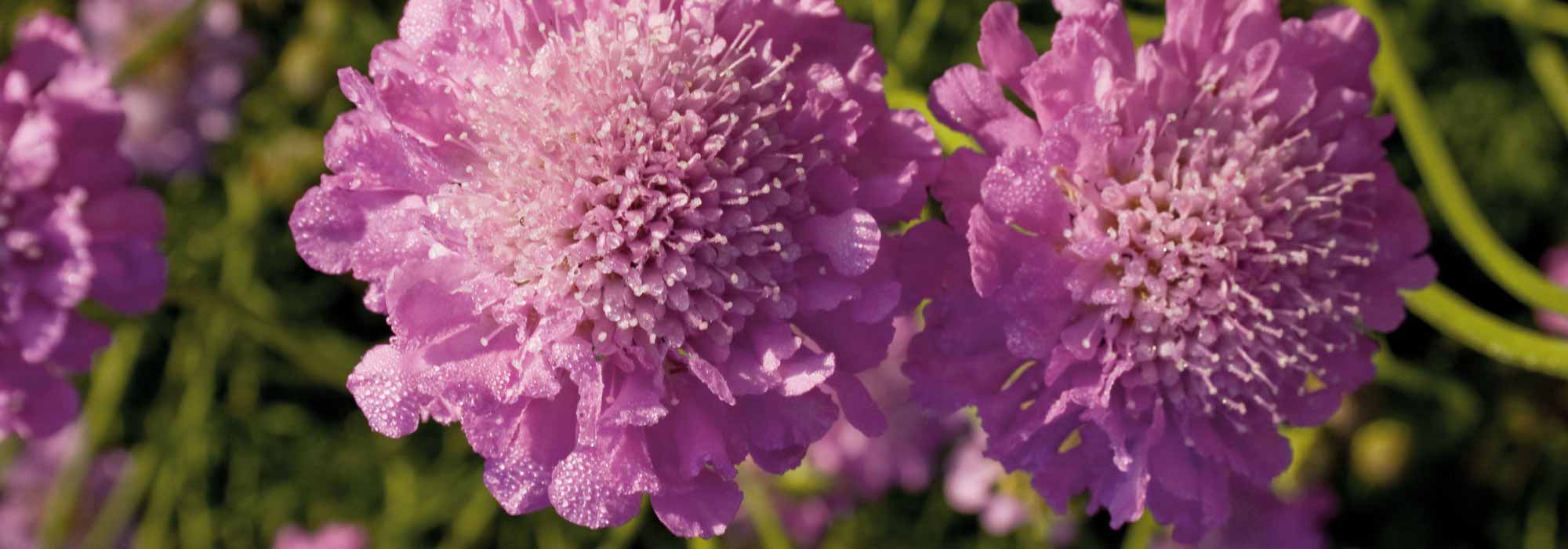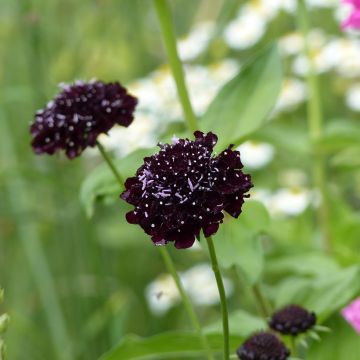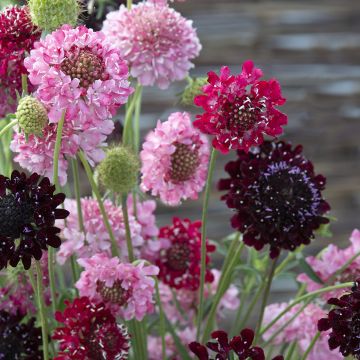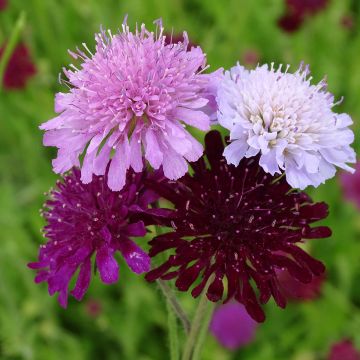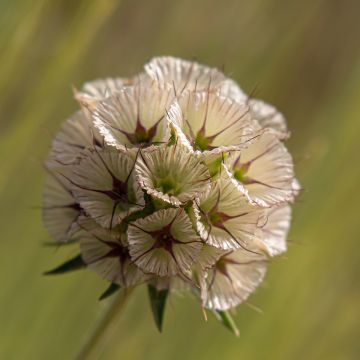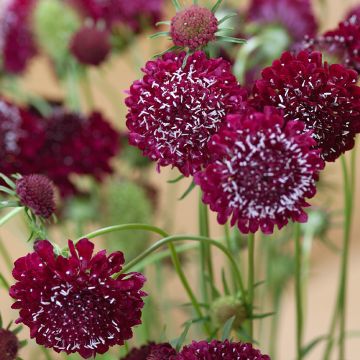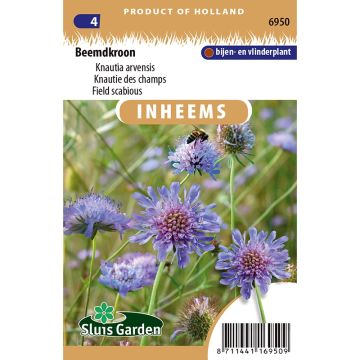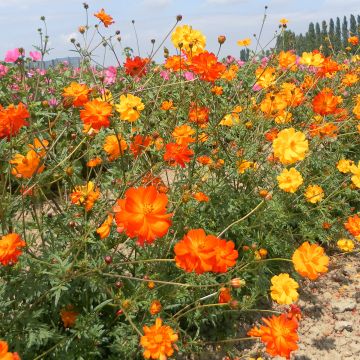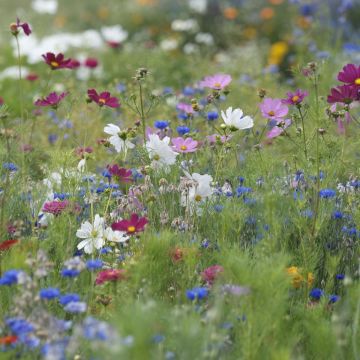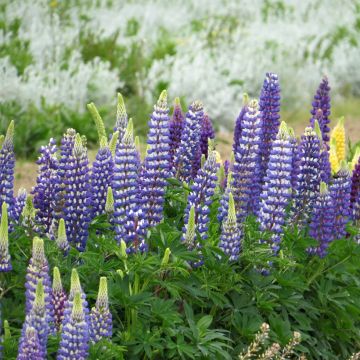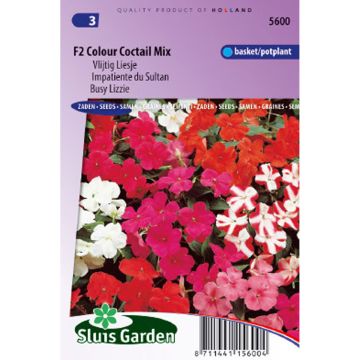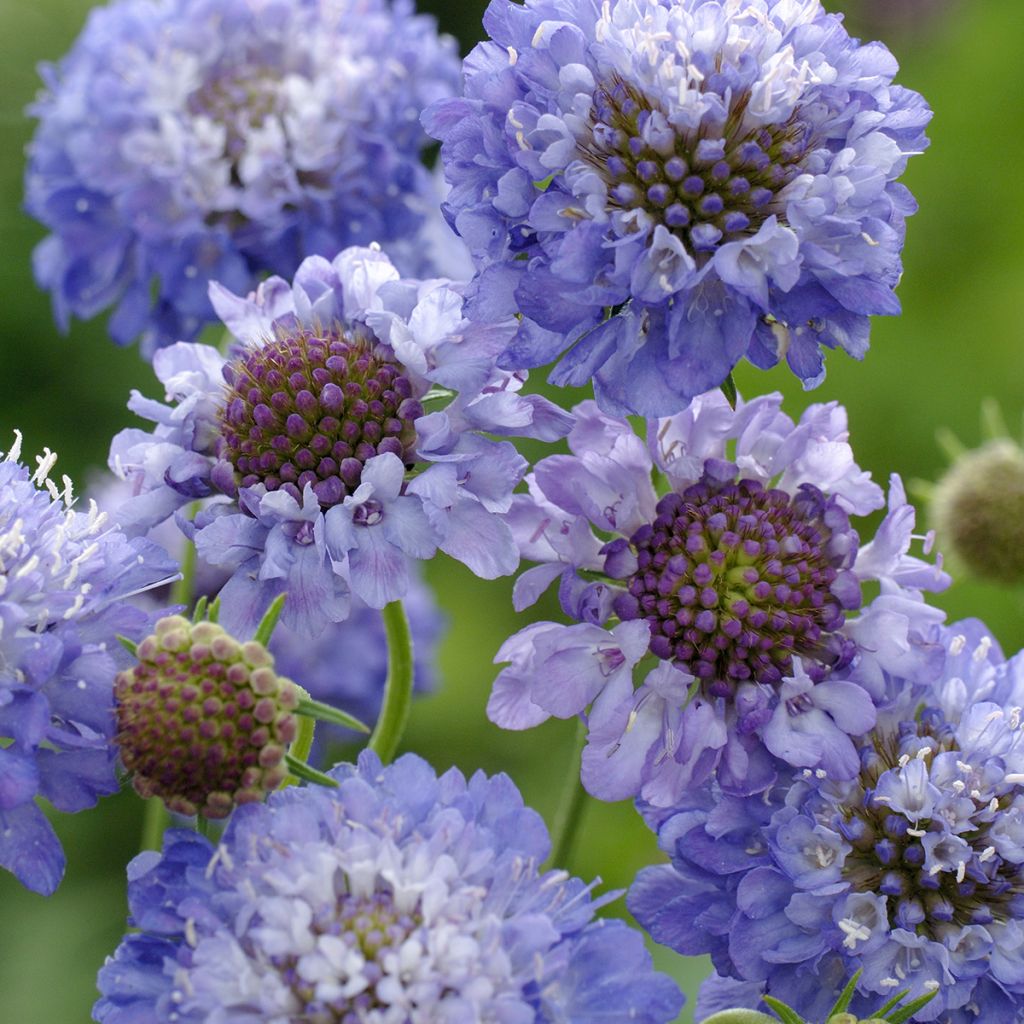

Scabiosa atropurpurea Oxford Blue Seeds - Sweet Scabious
Scabiosa atropurpurea Oxford Blue Seeds - Sweet Scabious
Scabiosa atropupurea Oxford Blue
Sweet Scabious, Mourning Bride
Special offer!
Receive a €20 voucher for any order over €90 (excluding delivery costs, credit notes, and plastic-free options)!
1- Add your favorite plants to your cart.
2- Once you have reached €90, confirm your order (you can even choose the delivery date!).
3- As soon as your order is shipped, you will receive an email containing your voucher code, valid for 3 months (90 days).
Your voucher is unique and can only be used once, for any order with a minimum value of €20, excluding delivery costs.
Can be combined with other current offers, non-divisible and non-refundable.
Home or relay delivery (depending on size and destination)
Schedule delivery date,
and select date in basket
This plant carries a 6 months recovery warranty
More information
We guarantee the quality of our plants for a full growing cycle, and will replace at our expense any plant that fails to recover under normal climatic and planting conditions.
Would this plant suit my garden?
Set up your Plantfit profile →
Description
The 'Oxford Blue' Organic Annual Scabiosa is a variety of Scabiosa atropurpurea, grown as an annual. With its rustic, subtle and graceful appearance, it brings lightness to flower beds with tightly packed pompom flowers in a vibrant blue-violet. Flowering from July to October, this scabiosa is beloved by a multitude of pollinators. With its long stems and long-lasting flowers, it is perfect for creating beautiful bouquets and adds a lot of charm to slightly wild gardens.
Scabiosa atropurpurea 'Oxford Blue' belongs to the Caprifoliaceae or Dipsacaceae family, depending on the classification. The species is native to southern Europe. This plant develops from a deep and extensive root system. It is often grown as an annual, although it is actually a short-lived perennial. Its base consists of a tuft of lanceolate leaves, more or less divided depending on the species, from which long, slender, hairy stems (from 50 cm to 90 cm) emerge. As you move up the stem, the leaves are sessile, divided, and progressively smaller until reaching the flower head. The flower head is always spherical (4 to 5 cm) with prominent stamens, like pompom, which earned it the nickname "Pincushion Flower". However, its shape also varies depending on the species: it can be very round, dense, and bristly or more flattened, with silky and crumpled petals, as in the 'Oxford Blue' variety.
It is best to have scabiosas in small groups, scattered among grasses or larger flowers, to bring a touch of colour, like a scattering of confetti in flower beds. Pick them to encourage more flowers or let them for winter decoration. They may self-seed.
The gentle colour of the 'Oxford Blue' Organic Scabiosa harmonises beautifully with centaureas, cosmos, love-in-a-mist, poppies, and delphiniums, creating a nostalgic atmosphere in the garden. Easy to grow and generously flowering, it brings life to the garden, responding to gentle breezes and serving as a food source for butterflies and other pollinating insects. It is easy to mix different seeds to quickly create a small flower meadow or fill a slightly wild slope.
Flowering
Foliage
Plant habit
Botanical data
Scabiosa
atropupurea
Oxford Blue
Caprifoliaceae
Sweet Scabious, Mourning Bride
Cultivar or hybrid
Other Scabiosa seeds
View all →Planting and care
Scabiosa atropurpurea 'Oxford Blue' is best sown under cover in a seed tray from March. If frost is still persistent in your region, wait until April, as these seeds prefer a temperature of around 18 to 20°C. They will germinate in about two weeks.
Just cover the seeds with a thin layer of substrate (3 mm) kept slightly moist. When the seedlings are large enough to be transplanted, you can place them in the open ground, as soon as the risk of frost has passed. Watch out for snails and slugs.
You can also sow them directly in the ground from April, if your climate is mild, or in May if you still have frosts. Loosen the soil and lightly bury the seeds, spacing them 15/20 cm apart. Once they have germinated, you can thin out the plants if necessary. Choose a sunny location and a slightly moist soil, but not heavy or waterlogged.
Sowing period
Intended location
Planting & care advice
This item has not been reviewed yet - be the first to leave a review about it.
Similar products
Haven't found what you were looking for?
Hardiness is the lowest winter temperature a plant can endure without suffering serious damage or even dying. However, hardiness is affected by location (a sheltered area, such as a patio), protection (winter cover) and soil type (hardiness is improved by well-drained soil).

Photo Sharing Terms & Conditions
In order to encourage gardeners to interact and share their experiences, Promesse de fleurs offers various media enabling content to be uploaded onto its Site - in particular via the ‘Photo sharing’ module.
The User agrees to refrain from:
- Posting any content that is illegal, prejudicial, insulting, racist, inciteful to hatred, revisionist, contrary to public decency, that infringes on privacy or on the privacy rights of third parties, in particular the publicity rights of persons and goods, intellectual property rights, or the right to privacy.
- Submitting content on behalf of a third party;
- Impersonate the identity of a third party and/or publish any personal information about a third party;
In general, the User undertakes to refrain from any unethical behaviour.
All Content (in particular text, comments, files, images, photos, videos, creative works, etc.), which may be subject to property or intellectual property rights, image or other private rights, shall remain the property of the User, subject to the limited rights granted by the terms of the licence granted by Promesse de fleurs as stated below. Users are at liberty to publish or not to publish such Content on the Site, notably via the ‘Photo Sharing’ facility, and accept that this Content shall be made public and freely accessible, notably on the Internet.
Users further acknowledge, undertake to have ,and guarantee that they hold all necessary rights and permissions to publish such material on the Site, in particular with regard to the legislation in force pertaining to any privacy, property, intellectual property, image, or contractual rights, or rights of any other nature. By publishing such Content on the Site, Users acknowledge accepting full liability as publishers of the Content within the meaning of the law, and grant Promesse de fleurs, free of charge, an inclusive, worldwide licence for the said Content for the entire duration of its publication, including all reproduction, representation, up/downloading, displaying, performing, transmission, and storage rights.
Users also grant permission for their name to be linked to the Content and accept that this link may not always be made available.
By engaging in posting material, Users consent to their Content becoming automatically accessible on the Internet, in particular on other sites and/or blogs and/or web pages of the Promesse de fleurs site, including in particular social pages and the Promesse de fleurs catalogue.
Users may secure the removal of entrusted content free of charge by issuing a simple request via our contact form.
The flowering period indicated on our website applies to countries and regions located in USDA zone 8 (France, the United Kingdom, Ireland, the Netherlands, etc.)
It will vary according to where you live:
- In zones 9 to 10 (Italy, Spain, Greece, etc.), flowering will occur about 2 to 4 weeks earlier.
- In zones 6 to 7 (Germany, Poland, Slovenia, and lower mountainous regions), flowering will be delayed by 2 to 3 weeks.
- In zone 5 (Central Europe, Scandinavia), blooming will be delayed by 3 to 5 weeks.
In temperate climates, pruning of spring-flowering shrubs (forsythia, spireas, etc.) should be done just after flowering.
Pruning of summer-flowering shrubs (Indian Lilac, Perovskia, etc.) can be done in winter or spring.
In cold regions as well as with frost-sensitive plants, avoid pruning too early when severe frosts may still occur.
The planting period indicated on our website applies to countries and regions located in USDA zone 8 (France, United Kingdom, Ireland, Netherlands).
It will vary according to where you live:
- In Mediterranean zones (Marseille, Madrid, Milan, etc.), autumn and winter are the best planting periods.
- In continental zones (Strasbourg, Munich, Vienna, etc.), delay planting by 2 to 3 weeks in spring and bring it forward by 2 to 4 weeks in autumn.
- In mountainous regions (the Alps, Pyrenees, Carpathians, etc.), it is best to plant in late spring (May-June) or late summer (August-September).
The harvesting period indicated on our website applies to countries and regions in USDA zone 8 (France, England, Ireland, the Netherlands).
In colder areas (Scandinavia, Poland, Austria...) fruit and vegetable harvests are likely to be delayed by 3-4 weeks.
In warmer areas (Italy, Spain, Greece, etc.), harvesting will probably take place earlier, depending on weather conditions.
The sowing periods indicated on our website apply to countries and regions within USDA Zone 8 (France, UK, Ireland, Netherlands).
In colder areas (Scandinavia, Poland, Austria...), delay any outdoor sowing by 3-4 weeks, or sow under glass.
In warmer climes (Italy, Spain, Greece, etc.), bring outdoor sowing forward by a few weeks.






























